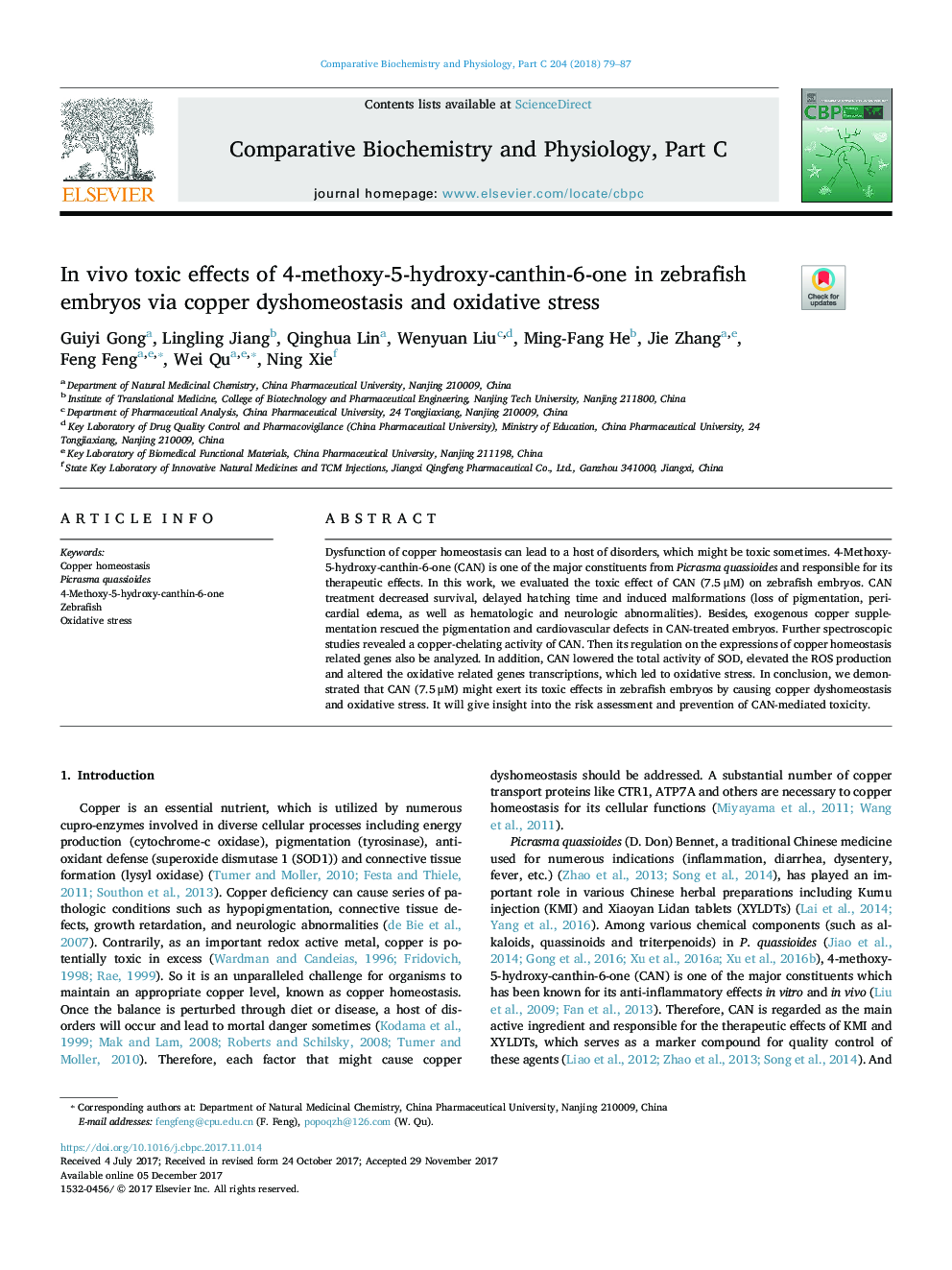| Article ID | Journal | Published Year | Pages | File Type |
|---|---|---|---|---|
| 8319055 | Comparative Biochemistry and Physiology Part C: Toxicology & Pharmacology | 2018 | 9 Pages |
Abstract
Dysfunction of copper homeostasis can lead to a host of disorders, which might be toxic sometimes. 4-Methoxy-5-hydroxy-canthin-6-one (CAN) is one of the major constituents from Picrasma quassioides and responsible for its therapeutic effects. In this work, we evaluated the toxic effect of CAN (7.5 μM) on zebrafish embryos. CAN treatment decreased survival, delayed hatching time and induced malformations (loss of pigmentation, pericardial edema, as well as hematologic and neurologic abnormalities). Besides, exogenous copper supplementation rescued the pigmentation and cardiovascular defects in CAN-treated embryos. Further spectroscopic studies revealed a copper-chelating activity of CAN. Then its regulation on the expressions of copper homeostasis related genes also be analyzed. In addition, CAN lowered the total activity of SOD, elevated the ROS production and altered the oxidative related genes transcriptions, which led to oxidative stress. In conclusion, we demonstrated that CAN (7.5 μM) might exert its toxic effects in zebrafish embryos by causing copper dyshomeostasis and oxidative stress. It will give insight into the risk assessment and prevention of CAN-mediated toxicity.
Related Topics
Life Sciences
Biochemistry, Genetics and Molecular Biology
Biochemistry
Authors
Guiyi Gong, Lingling Jiang, Qinghua Lin, Wenyuan Liu, Ming-Fang He, Jie Zhang, Feng Feng, Wei Qu, Ning Xie,
